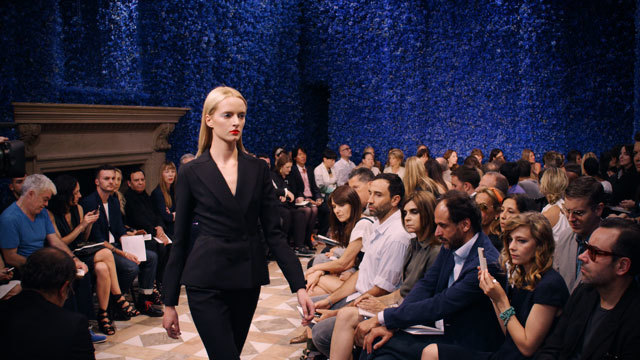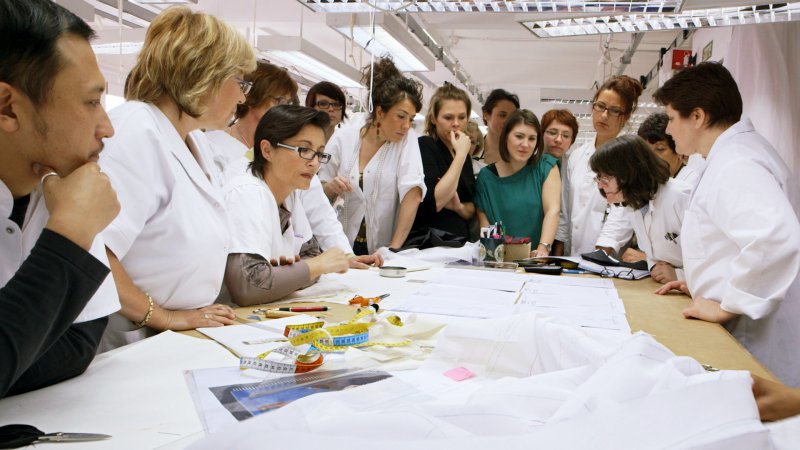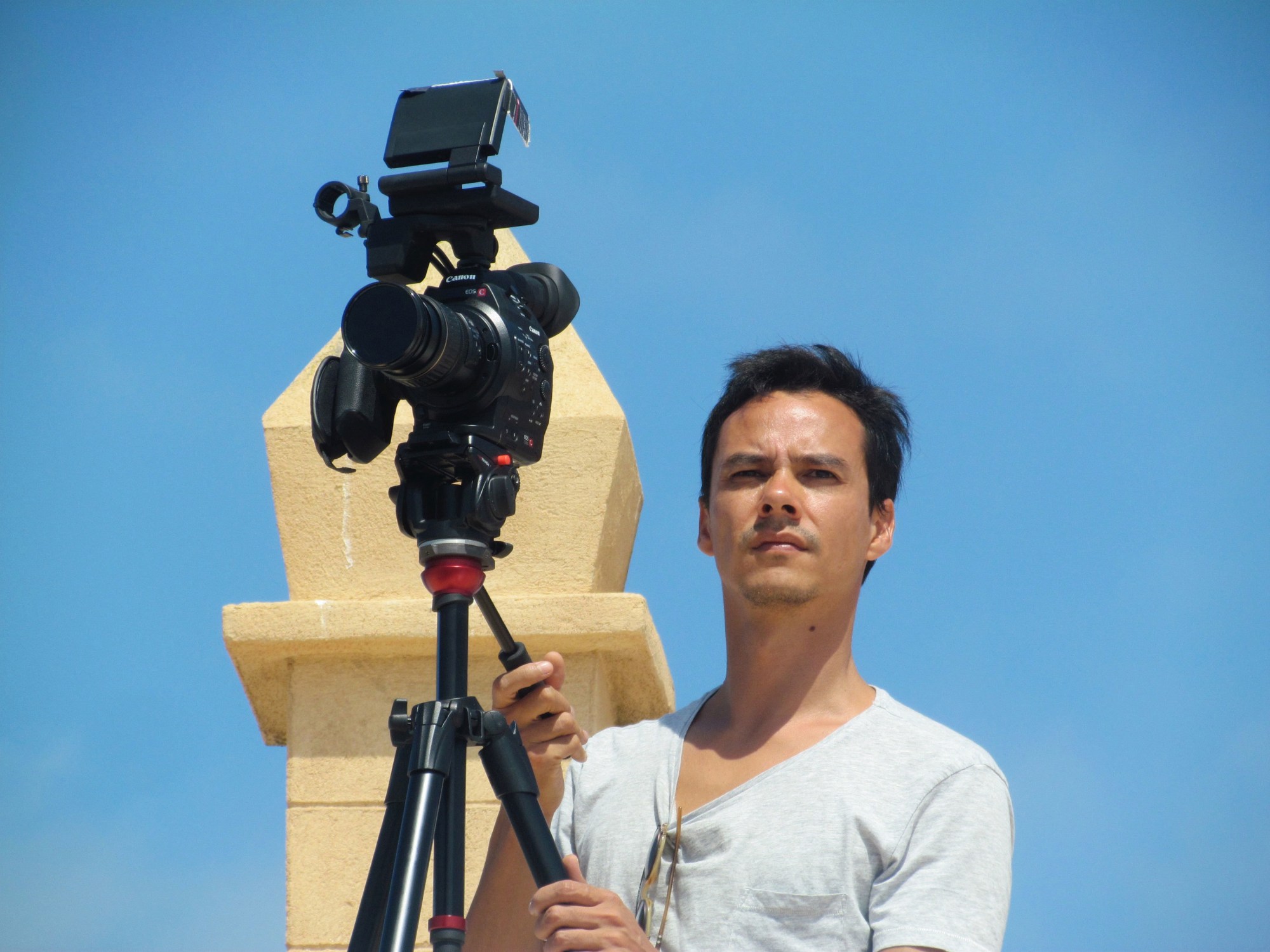Despite being a self-declared non-fashionista, filmmaker Frédéric Tcheng has a strange habit of making documentaries about the industry’s legends: first Valentino, then Diana Vreeland, and now Raf Simons in Dior and I. Tcheng had the privilege of following Simons for two straight months when the designer first joined Dior as head of womenswear. We see Simons explain how “humbled” he is as he’s introduced to the staff at the couture atelier (some of whom have been working for the house for 40 years), before insisting they call him Raf, rather than couture’s traditional Monsieur Raf.
The documentary shows the workings of the atelier, the relationships that develop, and sides of Simons that we’ve never seen before. We go beyond the designer’s shy stereotype and see him passionate, steely and emotional to the point of tears. We hear how he wants women to feel comfortable in his couture (he hates the idea that they would have to rely on a man), we see his unusual design process (instead of sketching, he puts 12 visuals into folders for each of his design team to develop, then takes them to his own point of perfection) and we watch as he tells one team member, “You can also not say no to me” (after she excuses her absence because she can’t say no when a top client calls on her).
After seeing the blood, sweat, tears, coffee, candy and Coke Zero that go into making the collection, we then watch the show in slow motion and the crowd in rapture. Here Frédéric Tcheng talks us through the making of Dior and I.

I hear the nervous head of the atelier, Monique, came to the Dior and I premiere. Are the people from the atelier enjoying the film and the attention?
I think so. We had a special screening for them in Paris. It was very emotional for me, sharing the film with them. As a filmmaker, when people have trusted you, you want to make sure they recognize themselves in the film and that they don’t feel you’ve betrayed or caricatured them. Monique came up to me after the screening and said to me in French: “Tu m’as pas loupée,” which means something like, “You didn’t miss me” or “You caught me” and she was happy.
How did you get such incredible access? Are you close to Raf?
I didn’t know Raf personally. I met some people at Dior at a screening we did for Diana Vreeland: The Eye Has to Travel, which I co-directed, and the Head of Communications at Dior, Olivier Bialobos, was there and he really enjoyed the film. We stayed in touch and he told me that they were announcing a new designer. I just seized the opportunity and told him what a great story it was, especially if it was Raf Simons. I had a feeling that Raf would be a great subject for me to explore. There was something that I felt we had in common.
What did you feel you had in common?
Maybe it’s a certain personality that is more about the work, more reserved maybe. I think in the case of Raf, he’s a very thoughtful person, and a very warm person when you get to know him. I felt like I could learn from his creative process. For example, in his earliest menswear collections, he was collaborating with his street-cast models, including their input into his collections. He had a way of shaking things up and doing things in an unconventional way.
I’ve always heard that Raf’s quite reserved, and he’s by no means over-the-top or flamboyant in the film, but he’s more talkative than I expected. And he’s tough! Like when he tells the team that they can’t say no to him.
He’s a very passionate person. When he feels strongly about something — and he always feels strongly about his work — he cares and he expresses it. One of the things I really wanted to do with this film was to have a three-dimensional portrait of him.
You cut footage of Raf with memoirs and archival footage of Christian Dior. There are some quite crazy crossovers between the two characters, aren’t there?
There were a lot of parallels. What was very striking to me when I read the autobiography of Christian Dior were his feelings of alienation with his public image. When I met Raf, I felt a strong sense that they had a lot in common. The really dramatic story is that it’s a story of emancipation. Raf must have felt like he needed to step out of the shadow of Mr. Dior and differentiate himself in order to assert his voice. It’s a tricky balancing act in which he was asked to channel the spirit of Dior but at the same time to assert his own direction. So that became the dramatic argument of the story.

It’s quite amazing that you were there right from when he got introduced to his atelier. It’s easy to forget that a big part of a designer’s success is being able to work well with their atelier.
That became the human story of the film, the story of collaborating with the atelier. Pieter talked about how nervous they [he and Raf] were about how to collaborate with such a large group of people. They were three against 250 Dior employees who’d been there for a long time. Some have worked at the atelier for 40 years, and you have to win them over. And they have to warm up to you, so it’s a very tense situation, especially if you have to do it in eight weeks.
I like your slow motion of everyone’s reaction to the show. There were so many other big designers in attendance — Riccardo Tisci, Marc Jacobs, Donatella.
It just shows the respect that other designers have for Raf Simons and his work. It was a genuine curiosity and interest that people have in Dior and Raf.
I was amazed to discover that Christian Dior himself was only the head of the house for 10 years.
He started very late, when he was 40. He had several lives in a way. He worked for other designers, and as a gallerist showing Dali and all of the Surrealists. He was pretty well connected with Jean Cocteau and people like that.
At one point, you film Raf in a car, going back to Antwerp for the weekend. Why do you think he goes back to Antwerp most weekends? To separate public and private, like Christian Dior?
I don’t want to speak for him too much, but I got the sense that he’s really grounded and has that idea of home. For him, home is Antwerp so he just wants to go and relax, and see his family and friends. I think it’s about keeping a sense of belonging.
Credits
Text Stuart Brumfitt
